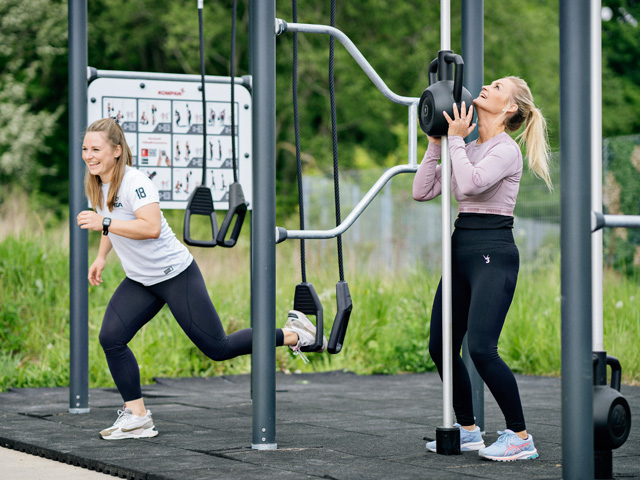
When it comes to achieving your fitness goals, incorporating variety into your exercise routine is crucial. One versatile and effective tool to consider adding to your workouts is resistance bands. These elastic bands provide an adjustable level of resistance that can challenge your muscles in different ways, helping you build strength, improve flexibility, and increase stability. Whether you’re a beginner or a seasoned fitness enthusiast, this article will guide you through the benefits of using resistance bands and offer practical tips on incorporating them into your exercise routine.
Understanding the Benefits of Resistance Bands
Before diving into specific exercises, it’s important to understand why resistance bands are worth incorporating into your workouts. Firstly, they are extremely versatile and adaptable, making them suitable for people of all fitness levels. The bands come in varying degrees of resistance, allowing you to progress gradually as your strength improves. Additionally, resistance bands offer a form of training that differs from traditional weights or machines, engaging your muscles in a unique way.
Resistance bands also provide constant tension throughout the entire movement, activating your stabilizer muscles and promoting better joint stability. This aspect is especially beneficial for injury prevention and rehabilitating muscles after an injury. Furthermore, resistance bands are portable, lightweight, and inexpensive, making them ideal for home workouts or when you’re on the go.
Adding Resistance Band Exercises to Your Routine
To begin incorporating resistance bands into your exercise routine, start by selecting a set of bands with varying levels of resistance. This will allow you to adjust the intensity of your workouts as needed. Here are a few exercises that can be easily incorporated into different parts of your routine:
a. Upper Body Exercises:
- Banded Push-Ups: Secure the band around your back and loop it around your hands as you perform push-ups, adding resistance to strengthen your chest, shoulders, and triceps.
- Standing Rows: Step on the band with both feet, grasp the handles, and perform rowing movements to target your upper back and biceps.
b. Lower Body Exercises:
- Banded Squats: Place the band above your knees or around your thighs, and perform squats while maintaining tension on the band to target your glutes, quads, and hamstrings.
- Lateral Band Walks: Place the band around your ankles and step sideways, keeping tension on the band to activate your hip abductors and improve hip stability.
c. Full-Body Exercises:
- Standing Woodchops: Attach the band to a sturdy anchor point and perform diagonal chopping movements to engage your core, shoulders, and hips.
- Banded Glute Bridges: Place the band above your knees, lie on your back with your feet hip-width apart, and perform glute bridges, pressing against the band for added resistance to activate your glutes and hamstrings.
Tips for Effective Resistance Band Training
To make the most of your resistance band workouts, keep the following tips in mind:
a. Focus on Proper Form: Maintain proper posture and alignment throughout each exercise to maximize muscle engagement and reduce the risk of injury. Pay attention to your body’s positioning and perform each movement with control.

b. Gradually Increase Resistance: As your strength improves, gradually increase the resistance level of your bands. This will challenge your muscles and ensure continued progress.
c. Combine with Other Training Methods: Resistance bands work well in combination with other training methods. Incorporate them into your existing routines, such as using them for warm-ups, super-setting with traditional weights, or integrating them into bodyweight workouts.
d. Experiment with Band Placements: By changing the position of the band, you can alter the emphasis on different muscle groups. Explore different placements to target specific areas and add variety to your routine.
e. Stay Consistent: Like any other training method, consistency is key. Aim to incorporate resistance band exercises into your routine at least two to three times a week to experience noticeable improvements in strength, flexibility, and stability. For more information or to read all about thermogenic fat burner, you may visit their page to learn more.
Conclusion
Resistance bands offer a simple yet effective way to add variety and challenge to your exercise routine. With their versatility, affordability, and portability, they can be seamlessly integrated into any workout setting. By incorporating resistance band exercises into your training program, you’ll be able to target various muscle groups, improve joint stability, and enhance overall fitness. Remember to start with proper form, gradually increase resistance, and stay consistent in your training. So, grab a set of resistance bands and embark on a journey of enhanced strength, flexibility, and a fitter you.


